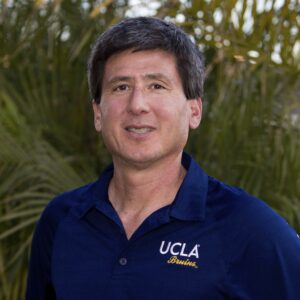January 15, 2024

Photo Credit: DigitalVision, Getty Images
Review of Myopia Management interviewed Robert Clark, MD, to get the latest insights on treating myopes with low-dose atropine. In this discussion, Dr. Clark discusses when to initiate treatment, the importance of early intervention, and responders vs. non-responders to low-dose atropine treatment. Read the full interview here:
Review of Myopia Management (RMM): How important is it to treat juvenile-onset myopia?
Robert Clark, MD: Of the various public health risks afflicting the modern child, like obesity, poor physical fitness, and depression, juvenile-onset myopia is the only one with no effective treatments later in life. Interventions like gastric bypass surgery or Ozempic injections don’t exist to shed the excess millimeters of eye growth caused by progressive myopia. It is critically important to treat juvenile-onset myopia during the period of rapid eye growth to give children their best chance for a lifetime of good vision.
RMM: When do you initiate treatment to slow childhood myopia progression:
- As soon as you diagnose the child with myopia?
- As soon as you diagnose the child with fast progression?
Dr. Clark: I start myopia control treatment in most children as soon as I diagnosis them with myopia, without waiting for clear signs of rapid progression. Often, signs of worsening myopia are already present when I first examine the child because the new refraction is significantly worse than the existing eyeglass prescription, but the change in refraction is not the most important part of the exam. Age of onset is much more important. Myopia worsens over time as the child grows, so young children will have the biggest benefit from treatment regardless of their current level of myopia or their past rate of myopia progression.
RMM: Which myopia management interventions do you prescribe?
Dr. Clark: I use three types of myopia control treatments — behavior modification, low-dose atropine, and optical therapy. Behavior modification is free, and parents like to hear that information come directly from the doctor to their child, emphasizing more outdoor time and less time spent on devices and other near activities. I use low-dose atropine for almost all of my patients because it has the largest body of supporting evidence, is exceptionally well tolerated, and can be used on all age groups and all levels of myopia, including very young children and those with very high myopia and astigmatism. Optical treatments are currently only available in contact lenses and can only be used in older children. Orthokeratology and multifocal soft contact lenses have been shown to be effective in reducing the rate of myopia progression in clinical trials but are much more expensive than the first two treatment options and only cover a limited range of myopia and astigmatism. They are most appropriate for older children with myopia within the available treatment range who want to transition from glasses to contact lenses.
RMM: Is topical low-dose atropine your first choice for treating juvenile-onset myopes? If so, why? What are your preferred concentrations of low-dose atropine?
Dr. Clark: Low-dose atropine is my treatment of choice for most children for three main reasons:
- It has the most research data supporting safety and efficacy.
- It works on all ages and all levels of myopia.
- Once per day dosing is an easy schedule to allow adherence to treatment.
Atropine 0.01% is my preferred concentration to start treatment because it works very well in most children, has the lowest rate of side effects like pupillary dilation, and does not cause any rebound in myopia progression after treatment is stopped. The lack of rebound is an important feature because over the course of treatment, many children will intermittently stop using the nightly drops for several months because they ran out of medication, had an extended vacation trip, or went to summer camp. Parents find it very reassuring to learn that missing doses will not cause an acceleration in myopia progression.
RMM: In the CHAMP pivotal phase 3 study, some children were responders to treatment with 0.01% atropine and others were not. What is the benefit of 0.01% atropine to responders? How long should one wait to determine if a child is an atropine responder or a non-responder? Did the Childhood Atropine for Myopia Progression (CHAMP) study provide any other interesting insights into the treatment of children with myopia? Are there any clues such as eye color, age, ethnicity, family history, degree of myopia at the initiation of therapy, etc., to predict which children will likely be non-responders? Is your treatment protocol for East Asian American myopic children different from other ethnicities?
Dr. Clark: The CHAMP study demonstrated that atropine 0.01% was superior to placebo in reducing the average rate of myopia progression. The emphasis on the average result, however, missed a very important clinical point: few children on treatment actually experienced the average effect of reduced myopia progression. In responsive children, atropine 0.01% had a very powerful effect, essentially halting myopia progression, while in non-responsive children, there was minimal effect with continued myopia progression. Combining the results between atropine responders and non-responders demonstrated a moderate treatment effect of reduced myopia progression that masked a much larger effect in responsive children.
Within the CHAMP data, there was a very powerful indicator that predicted whether a child was an atropine responder — the rate of myopia progression over the first year of treatment. Two-thirds of children who progressed ≤ 0.25D over the first year of treatment progressed < 0.50D over the three years of the study, while less than 10% who progressed > 0.25D achieved good control of their myopia. Taking this finding into clinical practice, if a child demonstrates any myopia progression > 0.25D during the first year of treatment, he or she is likely a non-responder and may require an escalation of myopia control therapy.
The other important finding was the increased efficacy of atropine 0.01% in children who entered the study with lower levels of myopia. Children who initiated treatment with ≤ -3.00D of myopia had a more than 75% greater treatment effect than children with > -3.00D, highlighting the importance of starting treatment at lower levels of myopia. Other factors such as age and eye color did not appear to have much effect on the final outcome. As for modifying therapy based on ethnic and genetic factors, I am more aggressive about escalating therapy to include higher concentrations of atropine and/or using combination therapy with atropine plus optical treatments for children who I believe have a higher chance of progressing to high myopia.
RMM: Currently, compounded low-dose atropine is prescribed off-label in the U.S. to treat juvenile-onset myopia. How important is it to have an FDA-approved formulation available? Why?
Dr. Clark: Especially given the recent outbreak of eye drop-related infections, FDA approval of low-dose atropine is critical to provide the assurance of safety and efficacy that parents and children want prior to starting treatment. Compounded atropine, while necessary to provide a treatment option pending FDA approval, simply cannot provide the consistency, sterility, and stability of an approved formulation. FDA approval will also likely lead to insurance coverage for treatment, an important step towards improving access to care for underserved populations.
 |
Dr. Robert A. Clark is founder and owner of South Bay Family Eye in Long Beach, California, a multi-subspecialty eye clinic. He is an Associate Clinical Professor at the Stein Eye Institute, UCLA, with more than 70 peer-reviewed publications plus a full-length book. His research interests include orbital anatomy, eye movement disorders, and myopia control. He was an Associate Editor for the Journal of AAPOS and currently serves on the Specialty Day Programming Committee. He has received Honor Awards from the American Academy of Ophthalmology and American Academy for Pediatric Ophthalmology & Strabismus for his contributions to those societies. |













